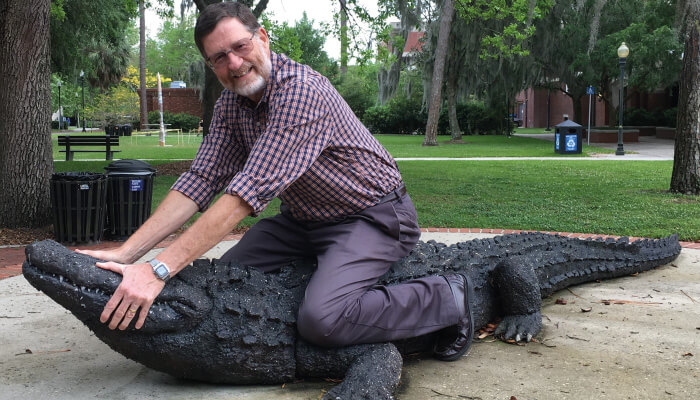I’m a professor and the Head of Analytical Chemistry at the University of Florida. I also serve as the Director of the Southeast Center for Integrated Metabolomics (SECIM) and I’m the Director of the Metabolomics Consortium Coordinating Center (M3C), which coordinates the metabolomics research funded by the NIH Common Fund. My favorite role is as a teacher and mentor – my next PhD to graduate will be my 100th! I consider the primary responsibility of a professor to be producing outstanding scientists who can go out and have a big impact on the world.

In my mind, the ideal PhD student has at least two of three characteristics: i) ‘brilliant,’ with the intellectual capacity to handle complicated concepts about analytical chemistry, instrumentation and measurements; ii) hardworking, committed and dedicated; iii) gifted in the laboratory, with a talent for the practical aspects of the work. If you aren’t brilliant, you had better be hardworking and good in the lab. Likewise, if you don’t plan to work hard in your PhD, then you had better be both brilliant and practically adept. Other skills also factor into the success of PhD students, though; for example, a number of my graduates with exceptional social skills and an entrepreneurial spirit have gone on to have successful careers as CEOs of start-up companies.
MS is a fantastic technique that can be applied to solve unique problems in metabolomics and beyond. When I was a new assistant professor at the University of Florida, MS wasn’t considered an analytical technique, but rather was used largely by organic chemists for determining the structure of new molecules and by physical chemists for fundamental measurements. Today, the applications are extraordinary. Even molecules as large as antibodies can be measured by LC-MS, and methods to detect molecules at trace levels are expanding.
The development of commercially available LC-MS/MS with high resolution MS in the final stage has had a huge impact on the field. For untargeted metabolomics, having tandem MS as well as the accurate mass at high resolution for the second stage has been invaluable. The addition of further stages of separation has been an exciting development, and ion mobility is leading the way in this space. Ion-mobility-enabled mass spectrometers are widely available, and are useful for separating mixtures that can’t be handled with chromatography or MS alone. In fact, we used ion mobility with LC-MS to examine two epimers of Vitamin D. We resolved sodiated ions of the epimers using ion mobility – one epimer adopted an open conformation and the other a closed conformation, each with a distinct drift time.
I’m the current President of ASMS after having spent two years organizing the conference program. About 8,000 people attend each year, with up to 4,000 papers presented. I particularly like the focus on poster presentations at ASMS, as it provides an opportunity for dynamic discussions; much more so than oral presentations, which often leave little time for questions. Moving forward, we’d like to encourage even more interaction between fundamentalists, who are concerned with things like bond energies, and those involved in the applications of MS. To this end, we have introduced a new oral session called “Fundamentals for Everyone”, which we hope will be engaging for the entire MS community.
The goal is innovation. I like nothing more than to hear a new idea and think, “Wow, I’ve never heard that before” or “I never knew that would work.” I have no doubt I will continue to be surprised on a regular basis because of the tremendous room for innovation in this field. MS is unlike many other analytical techniques in that it both separates and analyzes, which makes MS very powerful and is one of the main reasons for its continued growth. During my 40 years on the faculty at the University of Florida, I’ve watched MS grow while a lot of other analytical techniques that showed promise have lost their way; I’m confident that MS will continue to grow for the next 40 years.
That’s a difficult question! I’m proudest of watching the careers of my PhD graduates flourish. But I’m probably best known for conceiving and inventing the first triple quadrupole mass spectrometer, with Chris Enke at Michigan State University. Reviewers from the National Science Foundation thought it would never work, but Chris and I were stubborn enough to do it anyway. Today, it’s the most common mass spectrometer in the world, which is pretty funny for an idea that was dismissed and deemed unworthy of funding 40 years ago. What’s more, it’s now used to screen millions of newborn babies for 50 to 100 inherited diseases every year, saving thousands of them from an early death. Not a bad legacy.




